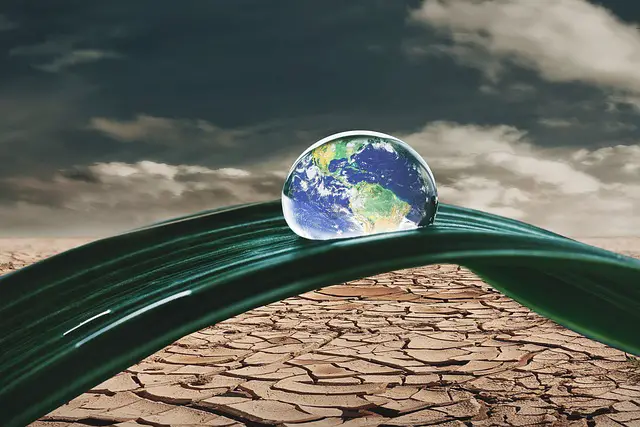Exploring Global Warming’s Impact on Subterranean Heat and Urban Sinking


As the world grapples with the far-reaching consequences of climate change, one often-overlooked aspect is the warming of the Earth’s underground layers. Beneath our feet lies a complex network of soils, rocks, and geological formations that are not immune to the effects of global warming. Moreover, the rising temperatures underground can have profound implications for the stability of urban infrastructure, leading to phenomena such as land subsidence and the sinking of cities.

Page Contents
Exploring Global Warming’s Impact on Subterranean Heat and Urban Sinking
Global Warming’s Subterranean Impact
Global warming, driven primarily by human activities such as the burning of fossil fuels and deforestation, has led to a steady increase in greenhouse gas concentrations in the Earth’s atmosphere. While much attention has been focused on the warming of the planet’s surface and oceans, the underground realm is also experiencing its own set of changes.
One of the primary reasons for underground heating is the transfer of heat from the Earth’s surface. As temperatures rise at the surface due to climate change, this heat gradually permeates into the subsurface layers, warming the soil, rocks, and groundwater below. Additionally, changes in land use, such as urbanization and the proliferation of heat-absorbing materials like asphalt and concrete, can exacerbate underground heating by reducing natural cooling mechanisms such as vegetation and soil moisture.
The Consequences of Underground Heat
The warming of the underground environment can have a range of consequences, from altering soil properties and groundwater dynamics to impacting the stability of infrastructure and land surfaces. One notable effect is the expansion of soils as they absorb heat, leading to phenomena such as soil subsidence and the compaction of underground layers. This can result in the sinking of land surfaces, particularly in areas with loose or compressible soils.
In urban environments, the effects of underground heating are compounded by the presence of extensive infrastructure such as buildings, roads, and utilities. As the ground beneath cities heats up, it can cause subsidence of the land surface, leading to uneven settling and structural damage to buildings and infrastructure. This phenomenon, known as land subsidence, is a growing concern in many urban areas around the world.
Cities on the Brink: How Underground Heat Causes Sinking
The sinking of cities, often referred to as land subsidence or ground subsidence, is a direct consequence of underground heating and the resulting changes in soil properties. In regions where underground aquifers are heavily exploited for water extraction, the loss of groundwater can exacerbate subsidence by causing the compaction of soils and the collapse of underground voids.
One of the most well-documented examples of urban sinking is occurring in cities like Jakarta, Mexico City, and Bangkok, where excessive groundwater extraction has led to significant land subsidence. As the underlying aquifers are depleted, the ground above them collapses, causing buildings to tilt, roads to crack, and infrastructure to fail. In some cases, entire neighborhoods have been submerged as a result of relentless subsidence, displacing thousands of residents and causing billions of dollars in damages.
Mitigating the Sinking Threat
Addressing the sinking of cities requires a multifaceted approach that combines measures to reduce underground heat accumulation with strategies to manage groundwater resources more sustainably. This includes:
- Reducing Urban Heat Islands: Implementing urban heat island mitigation strategies such as increasing green spaces, using reflective materials for paving, and promoting energy-efficient building designs can help reduce surface temperatures and alleviate underground heating.
- Sustainable Water Management: Implementing water conservation measures, promoting rainwater harvesting, and reducing reliance on groundwater extraction can help stabilize aquifer levels and mitigate the risk of land subsidence.
- Monitoring and Early Warning Systems: Developing robust monitoring networks and early warning systems to detect signs of land subsidence and ground instability can enable proactive interventions to mitigate risks and protect urban infrastructure.
- Investment in Infrastructure Resilience: Retrofitting buildings and infrastructure to withstand subsidence-induced ground movements and investing in resilient urban planning can help minimize the impacts of sinking cities on communities and economies.
Certainly! Here’s the list of the top 20 countries most prone to land sinking along with the reasons behind their susceptibility presented in a table format:
| Rank | Country | Cities Affected | Reasons for Land Sinking |
|---|---|---|---|
| 1 | Indonesia | Jakarta | Excessive groundwater extraction, urbanization, coastal location, and soft soils |
| 2 | Mexico | Mexico City | Groundwater depletion, former lakebed location, and weight of urban development |
| 3 | China | Shanghai, Beijing, Tianjin | Groundwater depletion, rapid urbanization, and soft soil conditions |
| 4 | India | Chennai, Mumbai, Delhi | Groundwater over-extraction, soil compaction, and urbanization |
| 5 | Bangladesh | Dhaka | High population density, groundwater over-extraction, soft deltaic soils |
| 6 | Vietnam | Ho Chi Minh City | Groundwater extraction, urbanization, and Mekong Delta location |
| 7 | Thailand | Bangkok | Groundwater pumping, urban expansion, and low-lying coastal location |
| 8 | Netherlands | Amsterdam, Rotterdam | Soil compaction, peat oxidation, and water extraction for land reclamation |
| 9 | Italy | Venice | Groundwater extraction, geological factors, and weight of historical buildings |
| 10 | United States | New Orleans, Houston | Groundwater withdrawal, oil and gas extraction, and urban development |
| 11 | Philippines | Manila | Groundwater extraction, soil compaction, and low-lying coastal area |
| 12 | Iran | Tehran | Groundwater pumping, soil compaction, and seismic activity |
| 13 | Pakistan | Karachi, Lahore | Groundwater depletion, urbanization, and soft soils |
| 14 | Egypt | Cairo | Groundwater extraction, soil compaction, and weight of urban development |
| 15 | Japan | Tokyo, Osaka | Groundwater extraction, urbanization, and seismic activity |
| 16 | Turkey | Istanbul | Groundwater pumping, soil compaction, and seismic activity |
| 17 | Brazil | São Paulo, Rio de Janeiro | Groundwater extraction, urbanization, and clayey soils |
| 18 | Vietnam | Hanoi | Groundwater over-extraction, urbanization, and low-lying deltaic area |
| 19 | South Korea | Seoul | Groundwater extraction, urbanization, and soft soils |
| 20 | Singapore | Entire country | Groundwater extraction, urbanization, and reclamation projects |
These countries face significant challenges related to land sinking, which can have severe consequences for infrastructure, ecosystems, and human populations. Addressing the underlying causes of land subsidence, such as groundwater over-extraction and unsustainable urban development, is crucial for mitigating risks and building resilience in these vulnerable areas.
Conclusion
As global temperatures continue to rise due to climate change, the underground realm is experiencing its own set of changes, with profound implications for urban stability and resilience. Understanding the linkages between global warming, underground heating, and the sinking of cities is crucial for developing effective strategies to mitigate risks, adapt to changing conditions, and safeguard the future of urban environments in a warming world. By addressing the root causes of underground heat accumulation and implementing sustainable water management practices, we can work towards building more resilient cities that can withstand the challenges of climate change.






